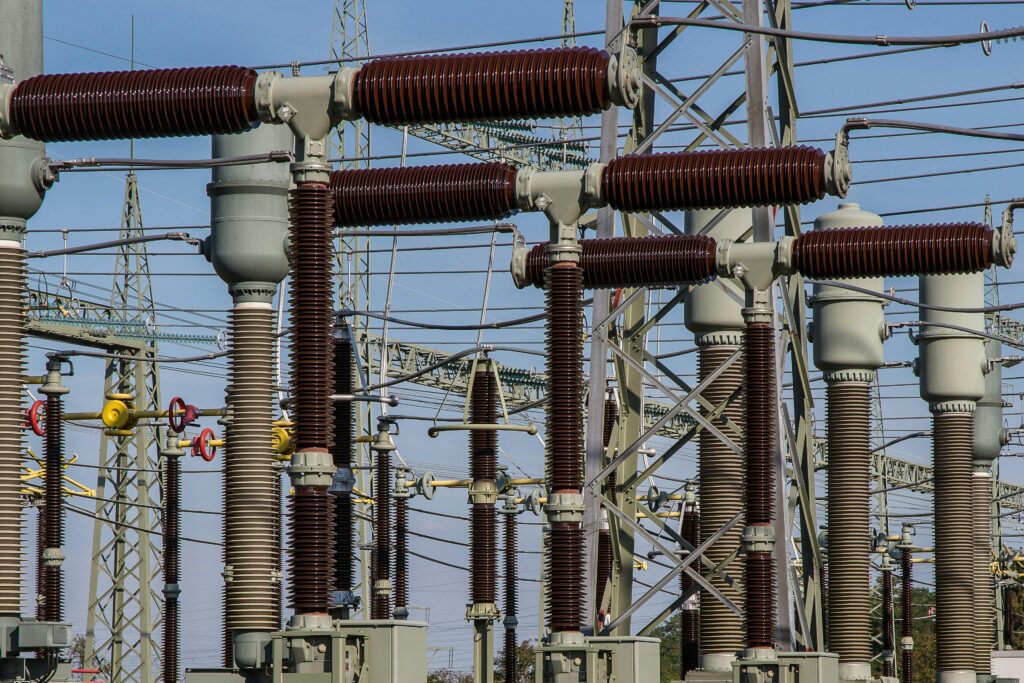If you’ve spent any time in the UK power industry—whether you’re in design, operations, or maintenance—you’ll know that 11kV is everywhere. It’s the backbone of the distribution network, yet it often gets overlooked compared to the bigger transmission voltages or the flashy move towards smart grids and decarbonisation.
But understanding the role of 11kV is essential if you want to properly grasp how our energy infrastructure works—and how it’s evolving. It’s where high-voltage transmission meets real-world delivery. It’s where things get local. And it’s where a huge amount of engineering work actually happens.
So, let’s get into it.
What Is the 11kV Network?
At its simplest, the 11kV network is part of the High Voltage (HV) distribution system. In the UK, HV typically covers voltages from 6.6kV to 33kV, but 11kV is by far the most widespread for urban and suburban areas.
It’s the voltage level used to distribute electricity from primary substations (fed from 33kV or 132kV lines) down to secondary substations, where it’s stepped down to 400/230V for use in homes and businesses.
So when we talk about the 11kV network, we’re really talking about that middle layer—the local backbone that links the transmission-fed primary network with the low voltage (LV) side.
Why 11kV? Why Not Higher or Lower?
The choice of 11kV isn’t arbitrary. It’s a compromise—one that balances performance, cost, safety, and legacy.
- Higher voltages (like 33kV or 132kV) are great for transmitting power over long distances with minimal losses, but they’re more expensive to build and maintain. The equipment is bulkier, the insulation requirements are higher, and the safety risks are greater.
- Lower voltages (like 400V) are safer and cheaper to manage, but the losses become significant over distance, especially with large loads.
11kV hits the sweet spot for medium-distance, medium-load distribution. It allows DNOs to:
- Keep infrastructure costs manageable.
- Serve reasonably large areas from a single primary.
- Maintain voltage levels within statutory limits across the network.
- Achieve decent fault discrimination between protection devices.
It’s a legacy voltage, yes—but it still makes solid engineering sense.
The Backbone of Urban Power Distribution
If you map out most UK towns and cities, you’ll see that they’re underpinned by a dense mesh of 11kV circuits. These aren’t just isolated radial feeders. In many cases, they form interconnected ring circuits, especially in city centres and industrial areas.
There’s a reason for that.
The 11kV network needs to be:
- Flexible – so loads can be reconfigured or switched in/out during faults or maintenance.
- Reliable – since it supports both critical infrastructure (hospitals, water works, transport hubs) and large domestic populations.
- Scalable – able to accommodate new connections, whether that’s a housing development, a supermarket, or an EV charging hub.
By using 11kV rings, DNOs can ensure:
- Load sharing across different feeders and transformers.
- Backfeeding capability in the event of a fault or outage.
- Ease of switching during planned works.
From an operational point of view, this level of flexibility makes the 11kV network incredibly valuable. It’s where a lot of the real switching and fault management work happens day to day.
Managing Faults and Protection
One thing that often surprises people new to the industry is just how much attention the 11kV network gets when it comes to protection schemes.
At 11kV, faults can cause significant damage if not cleared quickly, but we’re not dealing with the extreme energy levels of transmission voltages. That gives us more scope to use fuse-based or relay-based protection at various points in the network.
Here’s how protection is typically layered:
- Primary substations: HV circuit breakers with relay protection (often overcurrent + earth fault).
- 11kV feeders: May include additional protection at RMUs or pole-mounted switchgear.
- Secondary substations: Mostly fuse protection on the LV side, but HV ring switches can isolate upstream faults.
This structure means that a fault on one 11kV leg doesn’t necessarily mean loss of supply. The network can be reconfigured—sometimes automatically, often manually via switching plans—to maintain supply to as many customers as possible.
And because 11kV is manageable in terms of cable size, jointing complexity, and switchgear footprint, it’s also feasible to repair and maintain with relative speed compared to higher voltages.
Integration of Renewables and DERs
Here’s where things get interesting.
As the UK’s energy mix shifts towards decentralised generation—solar farms, battery storage, and wind turbines, especially at the community or industrial scale—these assets are connecting not to the transmission grid, but to the distribution network. And most of that happens at 11kV.
Let’s take a few real-world examples:
- A 5MW solar farm in a rural area? Likely to be connected at 11kV.
- A commercial battery storage project near a substation? 11kV again.
- Onshore wind farms that aren’t big enough for 33kV or 132kV connections? You guessed it—11kV.
This raises new challenges and opportunities:
- Voltage management becomes trickier with bidirectional power flows.
- Fault levels can increase due to inverter-fed or synchronous generation.
- Protection coordination needs rethinking.
- Network capacity assessments become more complex.
But it also makes the 11kV layer a key player in the transition to Net Zero. It’s not just a delivery path anymore—it’s where generation, storage, and consumption meet.
Upgrades and Smart Grid Potential
There’s a lot of investment going into modernising the 11kV network—both to handle increased demand (especially from EVs and heat pumps) and to make the system smarter.
Some of the key developments include:
- Remote monitoring and control via RTUs and SCADA integration at secondary substations.
- Smart switchgear that allows faster fault location and sectionalisation.
- Load flow modelling to support dynamic network reconfiguration.
- Adaptive protection settings that respond to real-time network conditions.
In other words, the 11kV network is no longer “dumb copper in the ground”. It’s becoming a dynamic, responsive layer of the grid. And as we start to see more flexibility services, active network management (ANM), and real-time data use, the 11kV level will be a key battleground.
Common Design and Operational Considerations
If you’re working on or designing for the 11kV network, there are a few things you’re constantly juggling:
- Cable sizing – balancing voltage drop, fault current capacity, and thermal loading.
- Earthing and step/touch voltage compliance – especially important in urban substations.
- Protection coordination – between primary, RMUs, and secondary fuses.
- Load forecasting – to ensure adequate capacity and avoid overloads.
- Switching plans and operational diagrams – which can get very complex, especially in mesh networks.
- Customer connection standards – ensuring compliance with ENA Engineering Recommendations (like G81 or G99 for generation).
It’s hands-on, technical, and often context-specific. You have to know your patch, your assets, and your constraints.
The Human Side: Who Works on 11kV?
If you’re starting out in electrical engineering, there’s a good chance your first real exposure to live networks will be at 11kV.
Whether you’re:
- A graduate design engineer drawing up RMU layouts,
- A field engineer working on switching operations,
- A SAP managing permits and HV access,
- Or a maintenance tech testing and inspecting switchgear,
…the 11kV network is where you learn the craft.
It’s big enough to require proper planning, safety, and coordination—but not so big that you’re buried under layers of control and bureaucracy. It’s the sweet spot where engineering judgement really comes into play.
Final Thoughts: Why It Matters
If there’s one voltage level that quietly keeps the UK running, it’s 11kV. Not flashy. Not headline-grabbing. But absolutely essential.
It’s the interface between large-scale transmission and real-world power delivery. It’s where flexibility, resilience, and day-to-day operations live. And as we move towards a more distributed, low-carbon grid, the importance of the 11kV network is only growing.
From an engineer’s point of view, it’s also one of the most rewarding areas to work in. You get to deal with real technical challenges, make meaningful decisions, and see the impact of your work on the ground.
So if you’re building your career in the power industry—don’t overlook 11kV. It’s not just a legacy voltage. It’s the backbone of the future grid.

